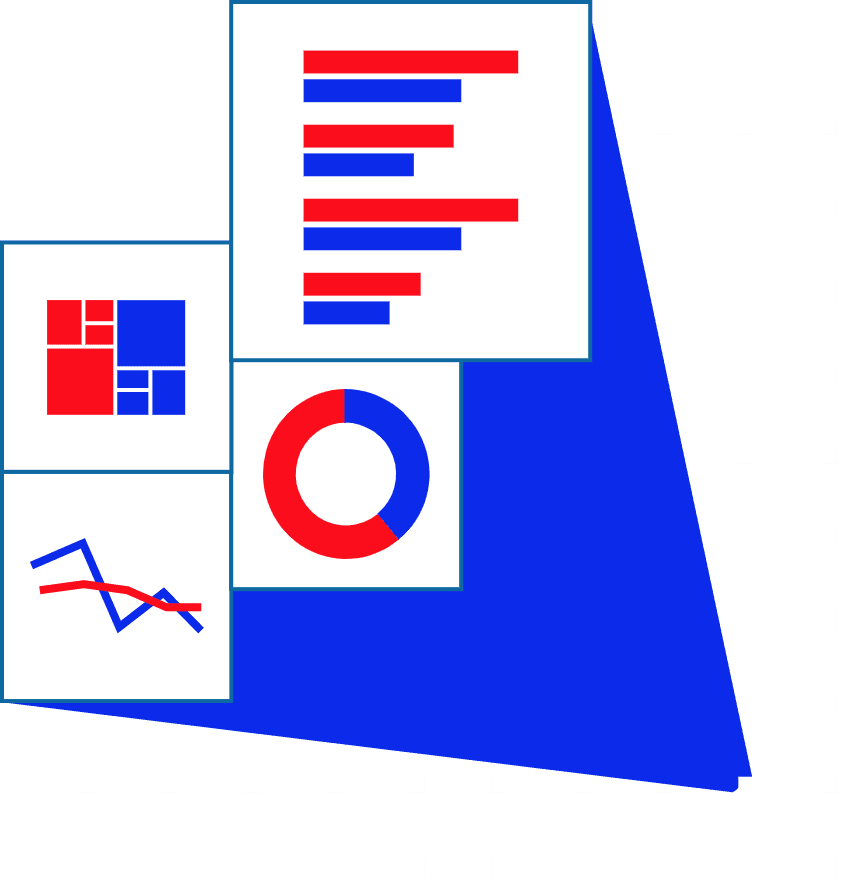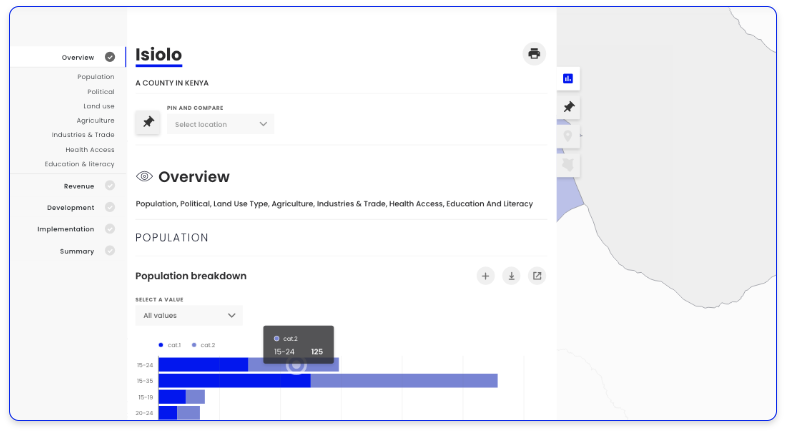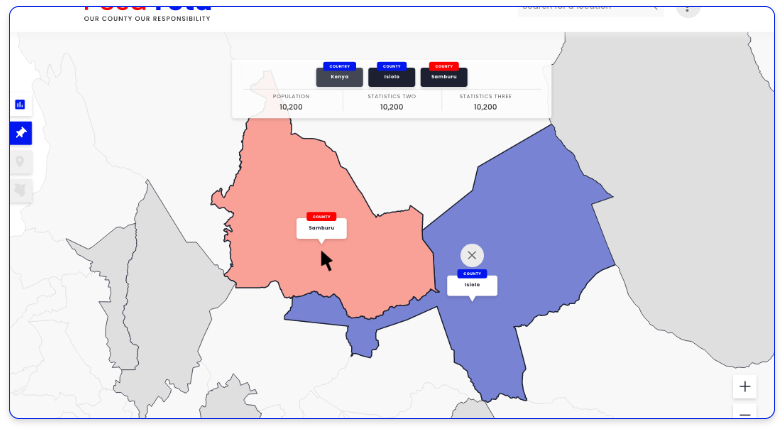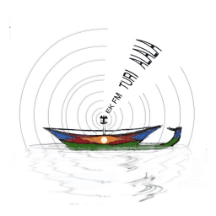
How it Works
Explore and
compare budget data
compare budget data
Finding, comparing and using eye-catching data visualisations for specific regions is now much easier with PesaYetu.

Our Metrics
Rich Data
This section includes all the data indicators visualised in interactive charts for a particular location. These charts - as well as the datasets behind them - can be shared, embedded, or downloaded.

Pin to Data
Several sets of data exist for different counties and municipalities allowing you to visualise multiple locations side by side and make comparisons where similar datasets exist.

Methodology
The datasets from the County Integrated Development Plans (CIDP) reports were scraped, cleaned, formatted and visualised for PesaYetu.
The CIDP 2018-2022 were sourced for each county. These PDF documents were scraped into a tabular format and loaded on to the data portal. Each dataset was analysed individually and the best chart chosen to visualise it.
The data was further cleaned and formatted and uploaded on to the HURUmap platform, which is the open-source framework where PesaYetu’s data portal is based.
HURUmap is an easy ‘plug & play’ toolkit for finding and embedding interactive data visualisations.
The Kenyan Constitution creates two levels of government: county and national governments, each with distinct functions. The county governments are responsible for providing a number of services, including agriculture and healthcare. They are also responsible for cultural activities, as well as public amenities such as museums, sports facilities, libraries and county parks.
Counties have responsibility over county transport, including public county roads, ferries and harbours. Other functions include trade development and regulation, county planning and statistics, pre-primary education, village polytechnics, homecraft centres and childcare facilities.
In addition, counties implement specific national government policies on natural resources and environmental conservation, including: soil and water conservation; and forestry. They are also charged with ensuring and coordinating the participation of communities and locations in governance.
The national government has broad powers over foreign affairs, use of international waters and water resources, immigration, national defence and internal security. It also sets policy on various sectors including national economic planning, intellectual property rights and education. Other national government functions include transport and communication, national referral health facilities, disaster management, public investment and regulation of national betting, casinos and other forms of gambling.
The data was further cleaned and formatted and uploaded on to the HURUmap platform, which is the open-source framework where PesaYetu’s data portal is based.
HURUmap is an easy ‘plug & play’ toolkit for finding and embedding interactive data visualisations.
The Kenyan Constitution creates two levels of government: county and national governments, each with distinct functions. The county governments are responsible for providing a number of services, including agriculture and healthcare. They are also responsible for cultural activities, as well as public amenities such as museums, sports facilities, libraries and county parks.
Counties have responsibility over county transport, including public county roads, ferries and harbours. Other functions include trade development and regulation, county planning and statistics, pre-primary education, village polytechnics, homecraft centres and childcare facilities.
In addition, counties implement specific national government policies on natural resources and environmental conservation, including: soil and water conservation; and forestry. They are also charged with ensuring and coordinating the participation of communities and locations in governance.
The national government has broad powers over foreign affairs, use of international waters and water resources, immigration, national defence and internal security. It also sets policy on various sectors including national economic planning, intellectual property rights and education. Other national government functions include transport and communication, national referral health facilities, disaster management, public investment and regulation of national betting, casinos and other forms of gambling.
ABOUT THE PROJECT
Learn more about the team behind the project, the development stages and how you can help improve PesaYetu.
Learn MoreStart learning
Interested in digital journalism? Sign up for the free world-class courses that feature mixed media lessons, concise tip-sheets and practical exercises.
Learn MoreOur Courses
This site is a project of Code for Africa, the continent’s largest network of civic technology and data journalism labs. All content is released under a Creative Commons attribution Licence 4.0. Reuse it to help empower your own community.
Resources

















